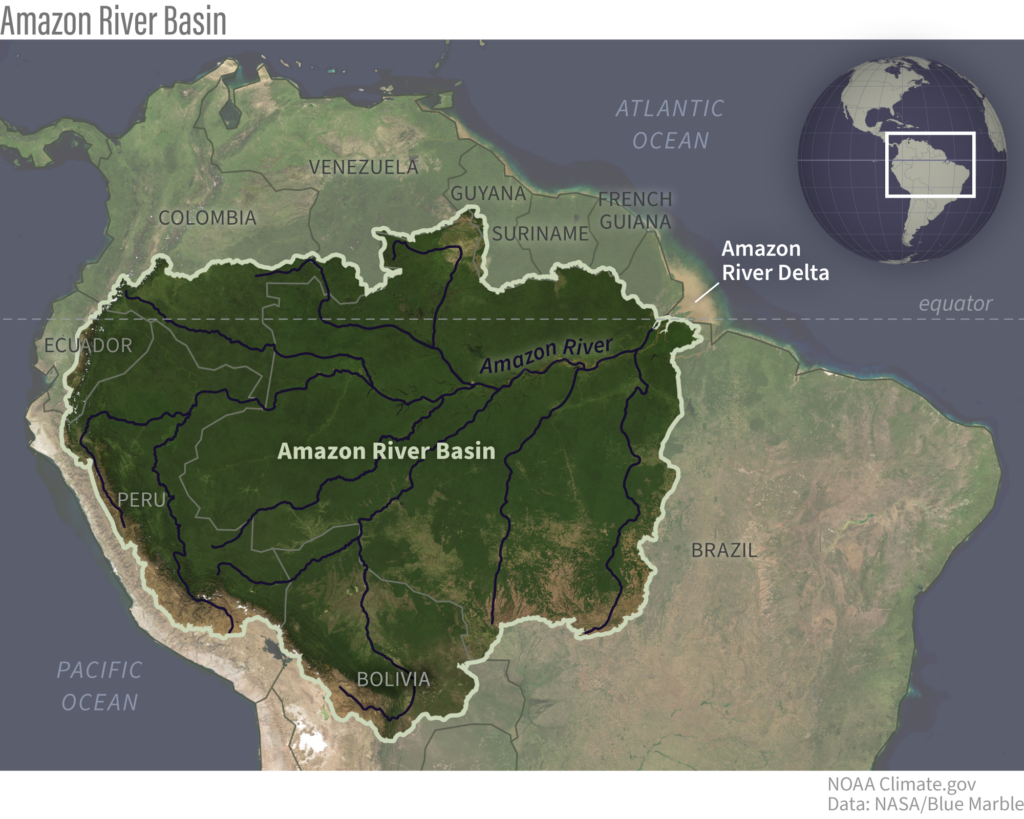Preliminary Analysis Says Global Warming More to Blame than El Niño for Amazon’s Ongoing Record Drought
Posted
Last Updated
The devastating drought in the Amazon River Basin that we wrote about in October has continued into Northern Hemisphere winter, which is the heart of the wet season in the southern part of the basin. The drought is cutting off rural and riverside communities from food supplies, markets for their crops, and health services; causing electricity blackouts due to hydropower disruptions; and forcing water rationing in some urban areas.
As we wrote in October, droughts are common in the Amazon during El Niño, a natural climate pattern that warms the central-eastern Pacific Ocean near the equator. Along with the ocean warming comes changes in which parts of the tropics get the most rainfall. The details vary from one El Niño to the next, but the Amazon is generally one of the rainfall losers, and the current El Niño is a strong one. In 2023, however, the rainfall shortages also came with extreme heat, which intensifies evaporation and drying of the soil.
Based on preliminary analysis of observations and computer model simulations, a team of experts with the World Weather Attribution project has concluded that human-caused global warming played a significantly larger role than El Niño in intensifying the 2023 Amazon drought. Compared to a world where global warming didn’t happen, models estimate that today’s warmer world doubled the precipitation deficits (“meteorological drought”) that could have been expected from El Niño alone, but even that impact was small compared the way rising temperatures amplified water stress (“agricultural drought”). The drought would have been “severe” without global warming, but the long-term rise in temperatures intensified it by two categories, turning the 2023 drought into an “exceptional” one that has become the worst on record.
read more at climate.gov

